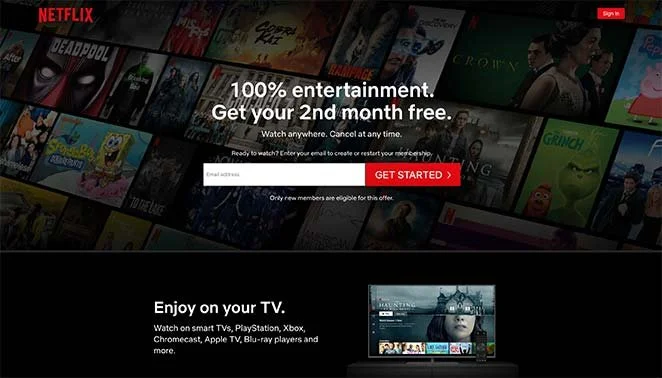The Ultimate Guide To Building Landing Pages That Convert
It doesn't matter what you're trying to sell, or whether the product is physical or digital, the one thing that remains constant is that it's your landing page that will make a buyer from a visitor. And if you haven't reached that place of trust and understanding with your customer, then you've wasted your time. Landing pages are for building stronger connections with customers and prospects.
Give people what they came for
The most important thing to remember is that you have to give people what they came for. If you're going to build a page that converts, you have to think about the person on the other end.
Source: Seed Prod
It's easy to get caught up in the idea of optimizing a page for this or that keyword or phrase, but if your visitor doesn't understand what they're looking at or why they should do something, then there's no point in doing all these things. You can't just write content and hope it will convert. You need to create an experience that makes sense and guides people through their journey with your product or service.
Be concise
Source: HubSpot
The purpose of a landing page is to convert visitors into leads or customers. If you’re trying to get them to buy a product or service, then it should be clear and simple.
Your ultimate goal should be clear from the moment someone lands on your page. If there are multiple options for them to take action, then you run the risk of losing potential customers because they won’t know what they have to do next!
Use testimonials
Testimonials are one of the most effective ways to build trust with potential customers because they show that other people have had success using your product or service. Testimonials are also a good way to show off your customer base and help potential customers identify with those who have used your product or service before them.
Source: neilpatel.com
Testimonial pages should be built around the needs of potential customers, not just your business. For example, if your product or service is for small businesses, then testimonials from other small businesses will be more effective than testimonials from individuals.
That being said, you can also build custom landing pages for specific groups of people, such as:
People who have purchased from you before
People who have downloaded a free trial of your product or service
People who visited a related page on your website (for example, if someone visited an article about marketing automation software but didn't buy anything yet).
Write copy that converts
The idea behind a landing page is simple: a single, dedicated place to gather information from your visitors. If you want to build a landing page that converts, you need to get your copywriting right.
Source: HubSpot
Visitors who land on your website via organic search are likely to be more qualified than those who arrive via paid advertising. They've already been exposed to your brand name and know what you do. They're also more likely to convert than someone who's only just heard about you through an ad. So don't waste time trying to please Google — instead, focus on writing content that will speak directly to visitors' needs and make them want to buy what you're selling immediately.
Use action words and active voice in copywriting. Action words help tell your visitor what they should do next ("Sign up now!"), while active voice (as opposed to passive) puts the focus on why they should do it ("Sign up now because..."). This creates a sense of urgency and encourages visitors to take action sooner rather than later. Create value for readers first, then sell them.
Make your forms short, simple, and smart
The longer your form, the more likely it is that someone will abandon it. To minimize drop-offs, use only one field per page and make sure they're in a logical order. Also be sure to include an "agree" checkbox — this way people don't have to type their name if they want to submit their email address.
Use one field per question. Don't be afraid to ask questions that might seem silly or irrelevant if they help you get better data from your customers. For example: "How did you hear about us?" might not seem like an important question — but it could lead you to discover which marketing channels are working best for your business!
Make sure your email address field is large enough for people to type in their email addresses without having to zoom in on their screens or scroll down the page — this will save them time and frustration!
Be clear about your call to action
One of the most important elements of your website is the landing page. It’s the page that people first see when they come to your site, and it’s also the last stop before they take action.
Source: HubSpot
A well-designed landing page can help you generate more leads and increase sales. But if you don’t have a clear call to action, you might as well be driving around in circles. The goal of your landing page is to get people to do something — click through to another page or sign up for an email list, for example. Make sure that this call to action is front and center so it’s easy for visitors to find and understand.
Conclusion
Of course, there are many other elements that make a good landing page. These are just a few key pieces of advice to follow when constructing your own landing pages. By creating conversion-centered pages, you'll be able to capture the leads you need to succeed.







